Part 4: 440-460 YE-Horrors in the Void
Horrors in the Void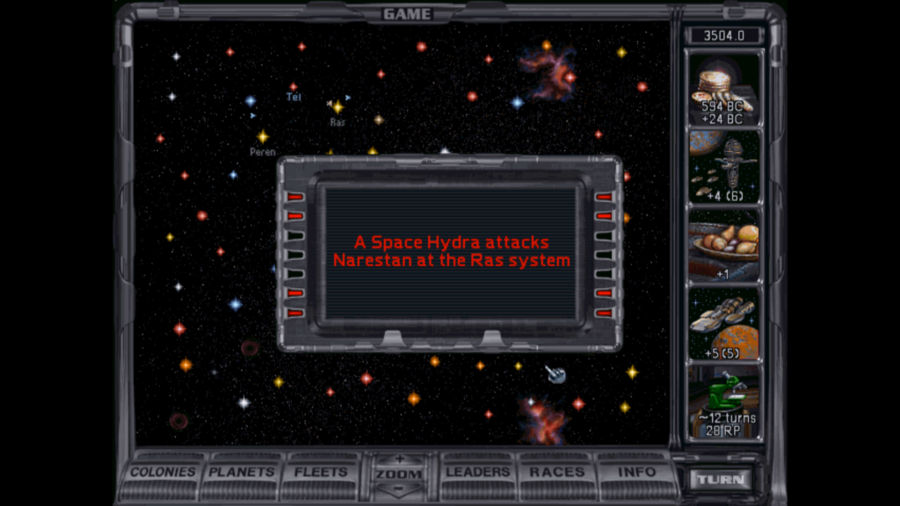
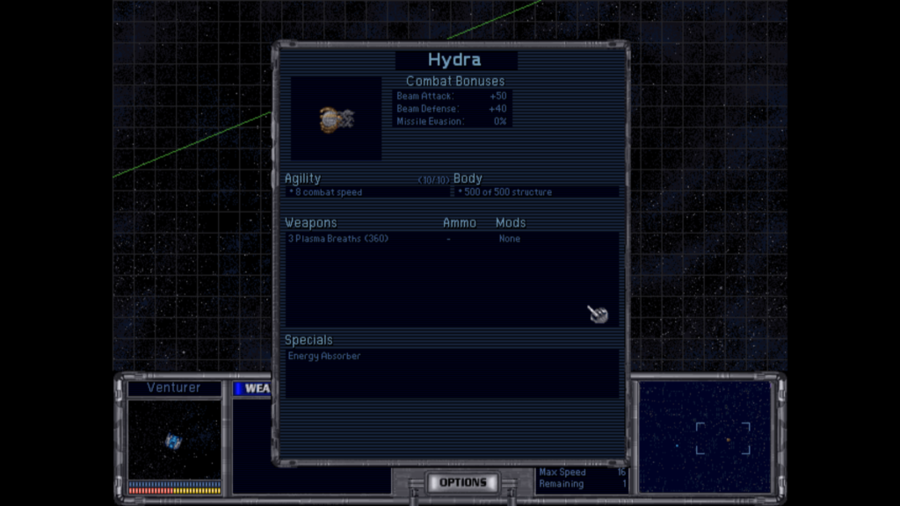
In 441, the Venturer arrived at the yellow star Ras, sweeping its sensors to survey the system. To its crew's shock and horror, along with the various bodies one might expect in a star system, they found a massive quasi-biological mass of tentacles, eyespots, and engulfing mouths with a core burning with temperatures like a stellar furnace which began to propel its way towards the exploration vessel. Frantic effort by the crew eventually allowed the ship to push itself back into hyperspace on an emergency course back to Tel before the terrible thing drew close enough to harm the Venturer.
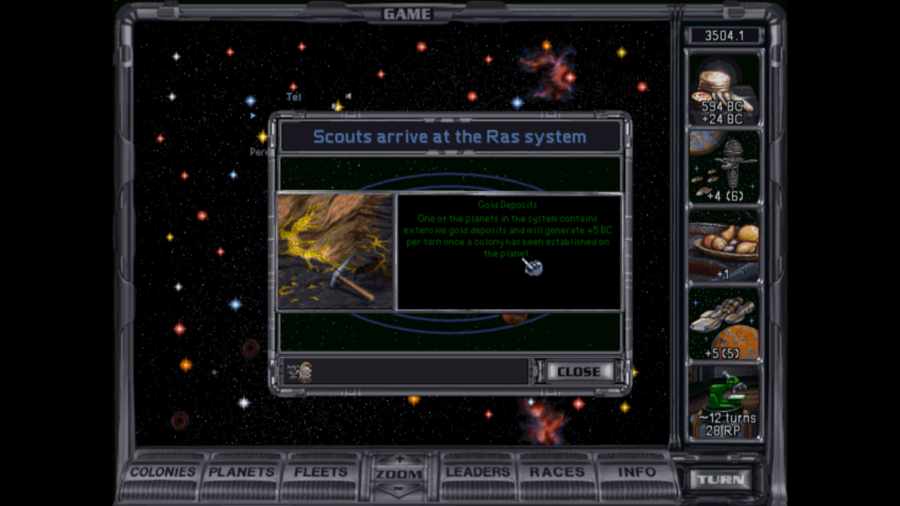
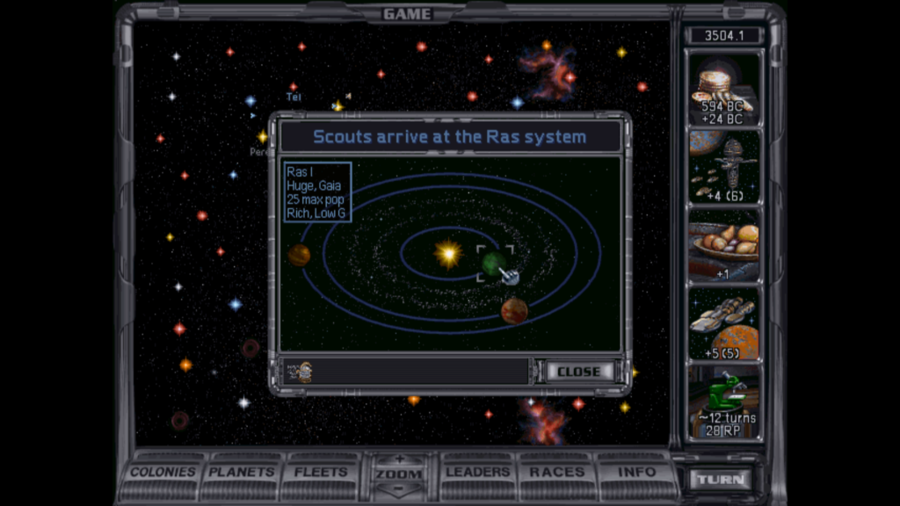
The planets orbiting Ras almost seemed to mock the explorers, as it was too dangerous to risk a return mission, yet what the Venturer had seen showed great promise. Ras I was an immense planet whose oceans and continents hosted an incredibly lush biosphere. Prevailing weather patterns that encouraged warm, mild conditions with heavy precipation over a very wide band of latitudes made for an extremely stable and friendly growing environment that provided large and stable supplies of food for local herbivores. The lush conditions for growth made deserts nearly unknown on Ras I, aside from those of the small polar ice caps. Despite its size and the rich deposits of heavy metals in the crust, the gravity on Ras I was anomalously low, hinting at strange secrets hidden on the planet.
Meanwhile, Ras V was a planet approximately the size of Nares, thickly shrouded in choking clouds of sulfuric acid. As a planetary environment, it was brutally unforgiving, but large amounts of gold were present lacing the rocks of this Hellish world. The gold of Ras V might have proven a spur to greed, but the horrific planetary conditions were an equally daunting obstacle. The inner system between Ras I and Ras V was marked by a thick and broad asteroid belt and a gas giant unusually close to its system primary.
Ras I is a huge, gaian, rich planet with low gravity; Ras V is a large, toxic, abundant planet with gold deposits. Low gravity gives a 25% output penalty on the planet, but the fertility and mineral richness on Ras I just might make up for that- assuming we could get through the space hydra. The 5 BC bonus income on Ras V is nice, but liable to get eaten into, eventually, by the 50% increase in maintenance costs on toxic worlds if we colonise it.
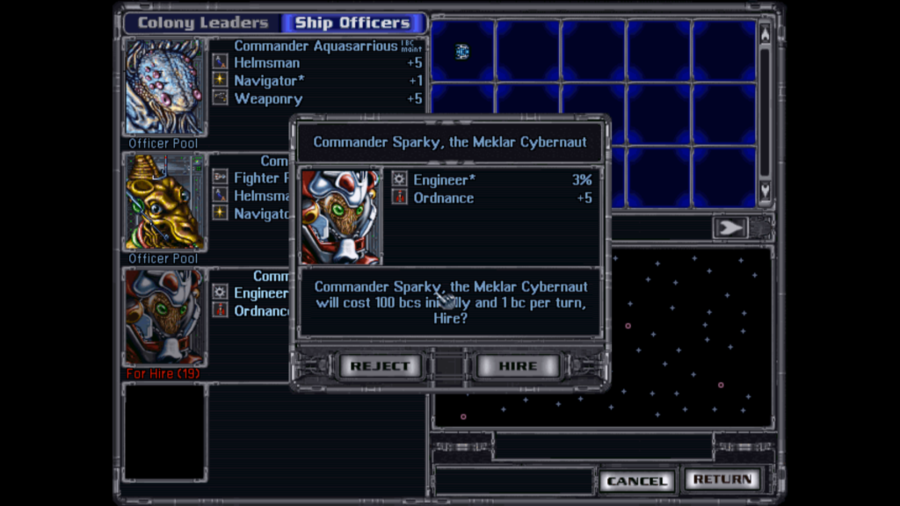
Continued development of engineering talent amongst major aerospace firms was only encouraged by experience and funding, and a series of radical techniques for design of repair equipment intended to help ships overhaul even major damage without need of a shipyard was eventually developed in 441. The expert pool of engineering talent in Narestan society would doubtless serve it in good stead in the future.
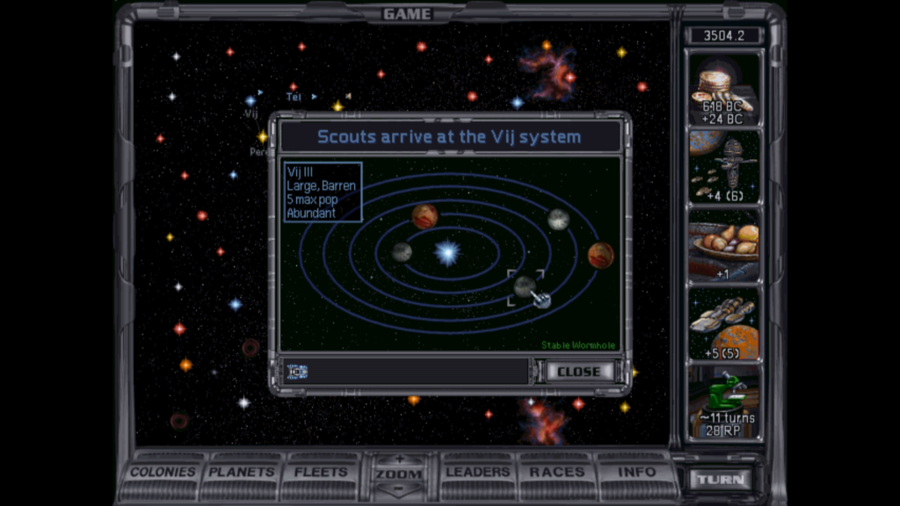
A year later, the Intrepid arrived at the hot blue-white star Vij. Two massive gas giants orbited in Vij's second and fifth orbits, still within its inner system. Meanwhile, three planets with thick, inert atmospheres orbited as the first, third, and fourth planets of the system, their atmospheres protecting them from the intense radiation output by the hot young star. Vij I was notably smaller than the other two, which were approximately the size of Nares, while Vij IV had unusually rich mineral and metals deposits along with crushingly heavy gravity that rendered it highly unattractive for colonisation. The most interesting thing about Vij, however, was evidence of a structural anomaly in hyperspace around the system providing a short, direct path to a red star on the opposite side of the galaxy.
Vij I, III, and IV are all barren planets. Vij I is small and mineral abundant, Vij III is large and mineral abundant, and Vij IV is large, mineral rich, and suffers from heavy gravity (which more than offsets any additional production from the mineral richness, as well as penalising other outputs by 50%). The wormhole lets us travel between two stars in only one year.
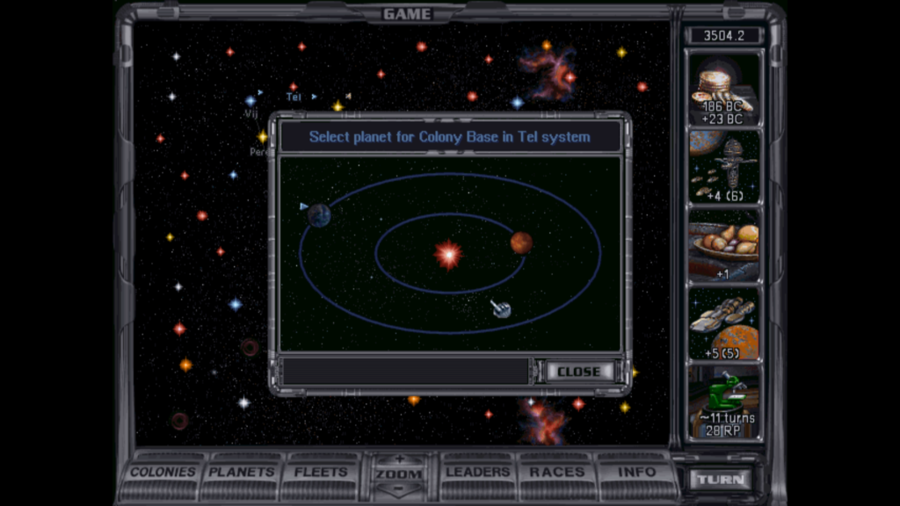
With the prospects of a truly promising new world accessible to Narestan colonisation dwindling, the initial colonisation mission from Nares set out to Sedal, establishing a functional colonial population by 442. Although Sedal was a radiation-baked wasteland, nonetheless the initial expense of colonising it was much less than would be needed for an interstellar mission, and investment was ready to develop the new colony into a prosperous and productive community.
A colony base only costs 200 production, compared to a colony ship's 500, and it began to become clear we weren't getting anything exciting nearby that made sense to hold out for, so I made the call to buy out a colony base.
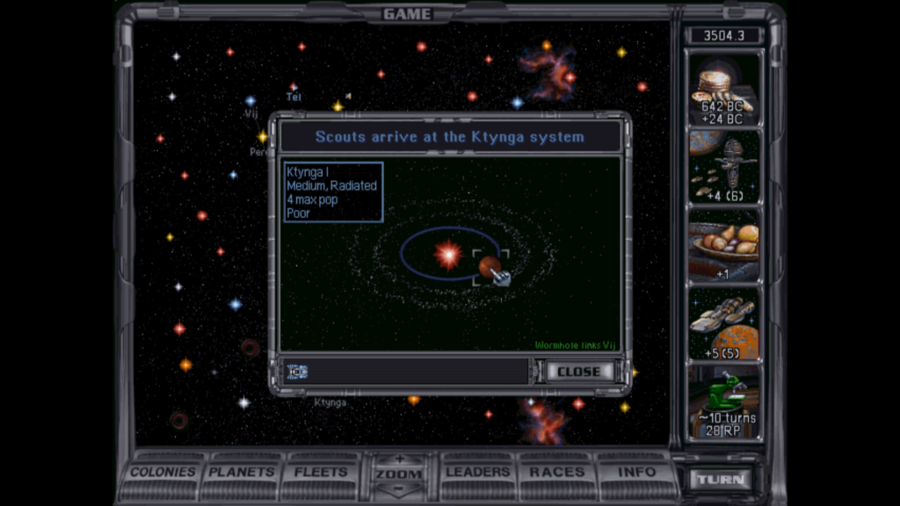
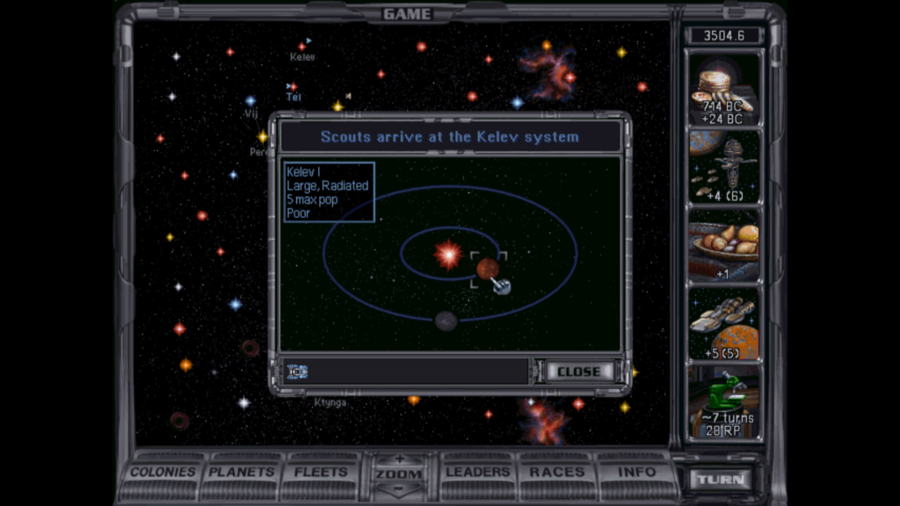
In 443, the Intrepid arrived at the opposite side of the strange path linking Vij and Kytynga, while in 446, the Venturer arrived at the red star Kelev near Tel. Both had close-orbiting, metal-poor planets seared and baked by radiation, of relatively little interest. Kelev also had, further out, a bitterly cold planet with modest oxygen content in its windswept atmosphere and thick ice sheets covering most of its surface. Further exploration proved there was an extremely primitive ecology of hardy molds around the equatorial belt of Kelev II, which otherwise was mostly notable for a crust seemingly comprised mostly of light rocks and silicates with minimal industrial metal content and inconveniently low gravity.
Kelev II is a small, tundra, ultra-poor, low-G world- not a very attractive prospect at all. It appears everything near Tel ranges from 'bad' to 'mediocre', except for the system guarded by the horrifying hydra.
Eventually, the work of scientists and research departments on Nares and Sedal bore fruit with continued improvements in the engineering of spacegoing ships around the year 450. Improvements in machinery and restructuring of internal spaces could recover a very significant amount of usable space for vessels, at the cost of a significantly increased manufacturing cost. The development of high-quality spaceframes in the future would no doubt help with whatever challenges the Narestans met amidst the stars.
The following decade passed largely uneventfully, although with growing investment dedicated to an attempt to improve the ease and efficiency of trade between Nares and Sedal, and with continuing efforts to assemble colonists for the bleak worlds of the stars surrounding Tel.
Narestan Civilisation as of 460 YE
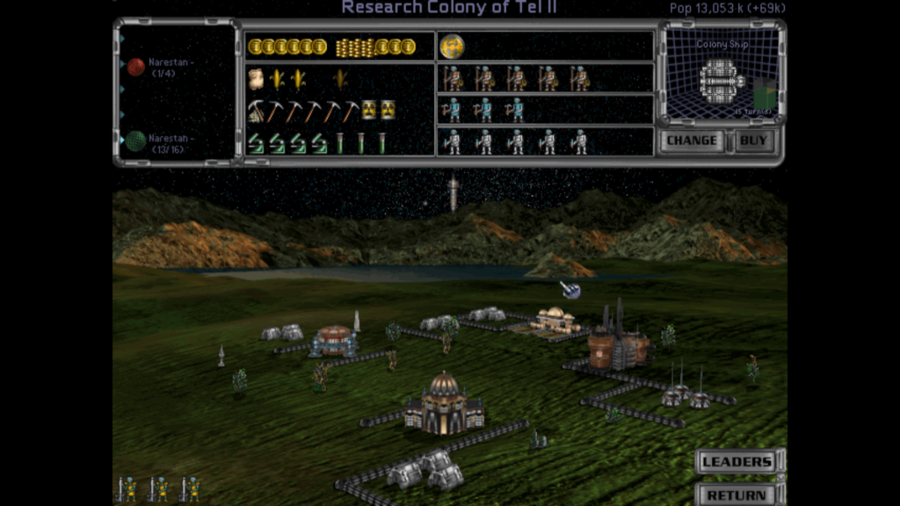
The population of Nares now stands at just over 13 billion persons and still growing, with the population employed in science, research, and development having increased from approximately 150 million to 250 million over the past twenty years. Food imports from Sedal currently make up approximately 8% of the food consumed on Nares, which has helped keep the size of the local agricultural sector steady. Nares remains prosperous, although the pull of new opportunities continues to attract colonists to a new colonial mission.
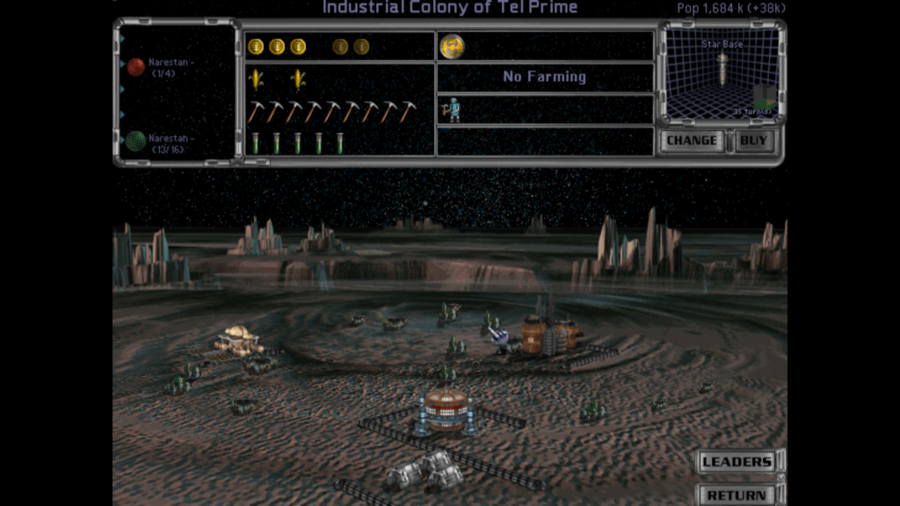
Sedal is now home to almost 1.7 billion persons, with an infrastructure which was rapidly moderised to match the standards of the homeworld. The relatively small population and the capital-intensive nature of its improved industries means that Sedal is critically dependent on imports from Nares to maintain its own infrastructure, importing large amounts of specialised equipment for its laboratories and its sealed industrial farms. The primary exports of Sedal, under current conditions, are food and a steady, if modest, flow of scientific data and engineering services under contract to firms back on Nares. Although the planet is well-developed, the difficulties of large-scale interplanetary trade, the smaller population, and the rather overstressed local infrastructure renders the availability of some products somewhat less reliable than on Nares itself, although it is hoped that eventually time will remedy these difficulties. Work has begun on a shipyard to orbit Sedal, although it is still a very long way from competion.
Sedal's running a deficit of two BC, but it exports a unit of food and produces research. We can count that as a win for now.
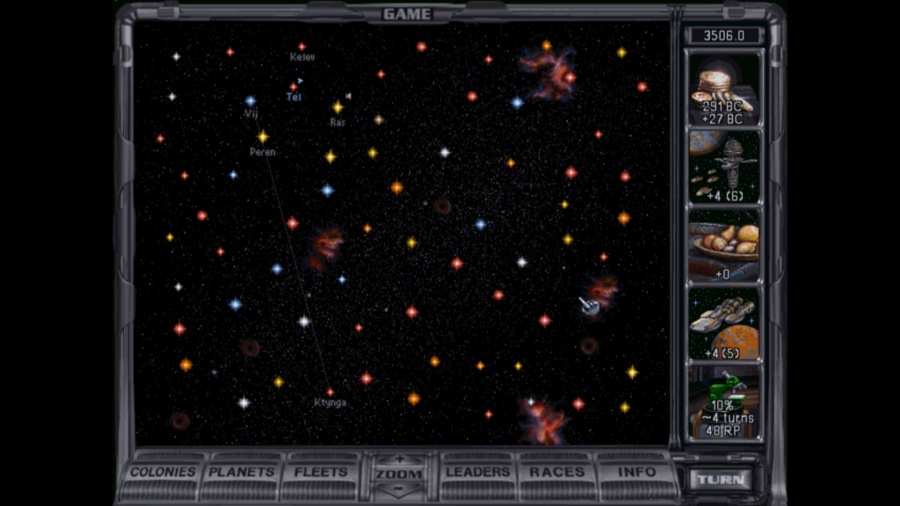
Annual investment has continued to slowly climb over the past two decades, while innovation and invention have risen sharply. Regular freighter runs link Nares and Sedal, with a great deal of transport capacity still to spare. It is anticipated that continued efforts to improve the flow of trade between the two Narestan worlds shall soon bear fruit, and, despite the unexpected dangers to be found beyond Tel, the Narestan people are confident of ability to thrive as an interplanetary and even interstellar civilisation.
Investment Proposals
Sedal
The construction of the shipyard over Sedal is an expensive proposition, while demand for specialty equipment and personnel for Sedal's laboratories and farms remains intense. The sale of industrial assets currently used for shipyard construction to local manufacturing firms on Sedal that focus on equipment to support local infrastructure and the supply of durable goods to the population may occur, leaving the shipyard half-finished until a later date, but much depends on the specifics of corporate negotiations and the anticipated value of the deal to everybody involved.
Please vote on whether to temporarily divert Sedal to building trade goods until its population increases further.
Review of Exploration Data on Physical Phenomena
Going over the physical data collected by the Intrepid and Venturer could potentially allow for a more solid basis for the understanding of physics. Although no applications of particularly great value are anticipated from the project, it is also a relatively easy project that would require relatively little funding.
Please vote on whether to grab Physics immediately after our current research project.
Long-Term Research
Continuing improvements in robotic equipment could have exciting applications in mining, industry, and construction, while advanced agricultural methods could have immediate and dramatic payoffs in the efficiency of Nares' agricultural sector, and both enjoy notable funding. Aerospace firms, meanwhile, continue to work on improving the ability of their drive systems to take advantage of the improved power output allowed by fusion reactors, while the metals industry has been continuing to experiment with the development of economical, durable alloys that could stand up to the harshest conditions and extend the lifespans of almost anything made of structural metals.
Please vote on Robo-Miners, Soil Enrichment, Fusion Drive, or Tritanium Armor as our next major research priority.
Colonisation Missions
Although the planets beyond Tel accessible to Narestan exploration and colonisation are frankly not terribly exciting as a group, nonetheless there is still enough enthusiasm for the potential payoffs to drive continued colonisation efforts. The specifics of what planet may be most promising are still discussed by many, however.
Please discuss and vote on what planet to colonise first, or whether we should start with an outpost. Please do not propose Vij IV, Kelev II, or anything in Ras as a colonisation target (due to 'heavy gravity', 'basically worthless', and 'we can't even do that yet', respectively), nor will I colonise Kytynga without first having a colony on Vij that can serve as logistical support for the effort.
Nares' explorers are long since safely home, and its civilisation slowly gears up for the immense leap beyond its own star system. Hopefully Narestan prosperity will only continue to increase.